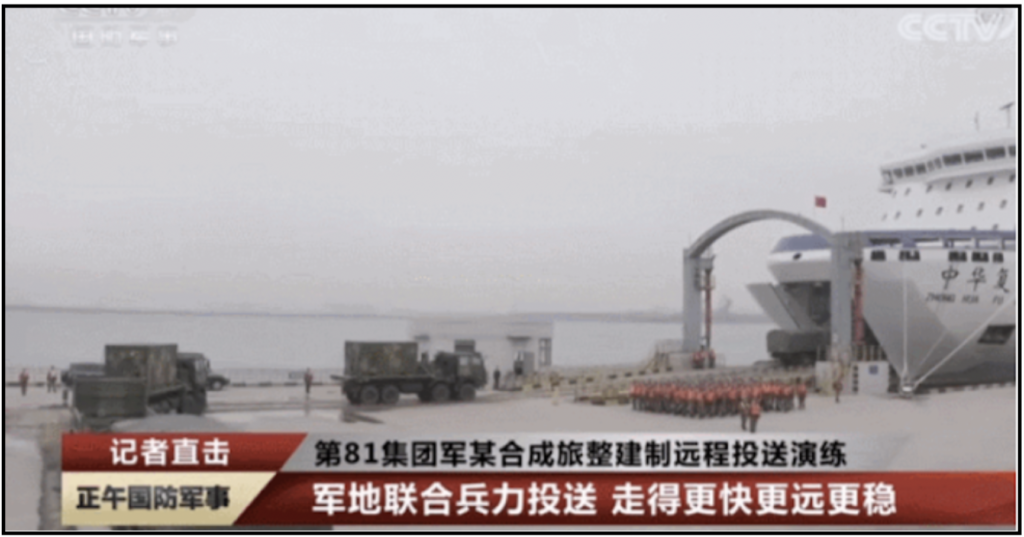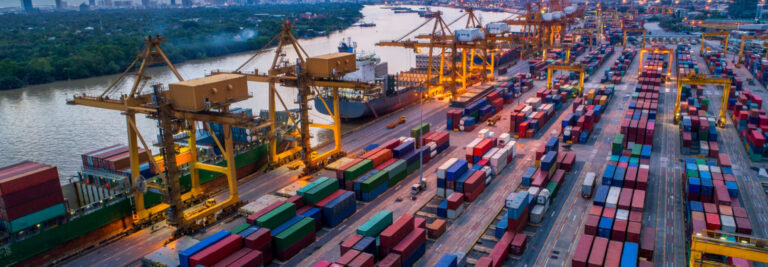One of the mysteries of the People’s Liberation Army (PLA) military operations conducted around Taiwan in early August—which featured provocative missile launches, naval exercises around the island, and repeated aviation sorties across the Taiwan Strait median line—was the apparent lack of any significant amphibious component to the exercises. (The summer months are a traditional time for PLA amphibious exercises, as with the Dongshan [東山] landing exercises traditionally held in past years off the coast of Fujian.) One potential explanation for the lack of amphibious activity was that elements of the PLA Ground Force 73rd Group Army had already conducted a “joint sea-crossing exercise” in May of this year, and that further drills had been deemed unnecessary. Another hypothetical, but plausible, explanation was that the Chinese Communist Party (CCP) leadership had decided against any large-scale amphibious exercises that might lead international observers to the erroneous conclusion that an actual cross-strait invasion was underway.
However, at the end of August the PLA Navy (PLAN) and PLA Ground Force (PLAGF) conducted an unusual amphibious training exercise, which involved the extensive use of multiple large-scale roll-on, roll-off (RO-RO) civilian cargo vessels to load and off-load landing craft and other military vehicles. This exercise did not appear to involve a substantial war-fighting scenario, but it filled (at least in part) the apparent summer gap in PLA amphibious training activity. Additionally, the drills provided a further illustration of the CCP’s drive to achieve “military-civil fusion” (MCF, 軍民融合) in the PLA’s dual use of civilian industrial, infrastructure, and transportation resources.
The PLA’s Recent History of Training with Merchant Vessels in Amphibious Operations
Many observers of the PLA have long pointed to the lack of sufficient amphibious lift capability as a major weakness in terms of conducting either an island seizure operation or potential cross-Strait invasion. In recent years, the PLA has experimented with the use of civilian merchant vessels in a variety of unconventional ways, such as the use of semi-submersible heavy lift vessels as “maritime relay platforms” for helicopters in drills conducted in the Yellow Sea in August 2020. However, the PLA’s primary interest appears to lie in employing larger cargo vessels to boost its operational sealift capabilities. The employment of RO-RO vessels in this manner has led to PRC press materials referring to them as “military-civilian use passenger roll-off ships” (軍民用的客滾船), or even as “civilian use model amphibious assault ships” (民用版兩棲攻擊艦). According to one state media source:
The PLA is now practicing using large, military-civilian integrated ferries to transport troops across the sea, and this is because, as much as the pure military amphibious landing ships are specially designed to fulfill that purpose, their number is limited compared with the number of civilian ships […] After the PLA has secured sea lanes, civilian ships can also join troop transport missions, and they will ensure that a large number of troops can be transported to the battlefield.


The PLA’s first self-described employment of a large civilian RO-RO vessel came in a reported four-day training exercise in July 2021. In this exercise, the vessel Bohai Pearl (渤海珍珠) (24,000 tons) was employed by a “combined arms brigade affiliated with the PLA 73rd Group Army” in “cross-sea, long-distance troop transport exercises.” In this training evolution, “[m]ore than a dozen types of vehicles, including self-propelled howitzers, amphibious armored vehicles and military trucks were loaded” on board the vessel.
An apparently larger-scale exercise was conducted in October 2021, reportedly involving a combined arms brigade of the 81st Group Army and the enormous 45,000 ton RO-RO vessel Zhonghua Fuxing (中華復興). According to state press coverage, in this drill a “large number of combat vehicles including Type 96 main battle tanks, Type 04 infantry fighting vehicles and […] tactical assault vehicles as well as support vehicles like medical vehicles, repair vehicles, engineering vehicles, reconnaissance vehicles and command vehicles boarded the ship in a sequence predetermined based on combat tasks, so they can be rolled out and enter combat the moment they arrive at the destination.”
The Amphibious Loading Exercises of Late August 2022
In the last days of August, analysis of maritime tracking data, supported by PRC state media reporting (see here and here), indicated that seven large RO-RO vessels of the Bohai class (渤海XX系列)—Bohai Cuizhu (渤海翠珠), Bohai Mazhu (渤海瑪珠), Bohai Yuzhu (渤海玉珠), Bohai Jingzhu (渤海晶珠), Bohai Jinzhu (渤海金珠), Bohai Zuanzhu (渤海鑽珠), and Bohai Hengtong (渤海恒通)—were either en route to Fujian from their normal operating area in the Yellow Sea, or else had already arrived. These vessels all belong to the commercial Bo Hai Ferry Group Company (渤海輪渡集團股份有限公司), which wears a dual hat as the “Eighth Transport Group” (海運八大隊) of the PRC Maritime Militia.
Commercial satellite imagery published by the US Naval Institute revealed training drills conducted on August 31 at a site on the coast of Fujian, in which the Bohai Hengtong and other vessels were employed as mother ships for landing craft embarkation / de-embarkation training evolutions. In the drills, landing craft from an unidentified PLAGF unit deployed from the beach, swam to the ships waiting offshore, and entered the vessels via deployed ramps. Following presumed loading drills inside the vessels, the landing craft departed the ships and returned to shore.
The vessels of the Bohai series vary in size: per PRC media commentary, the smallest, Bohai Jinzhu, displaces 14,000 tons, with a carrying capacity of 71 vehicles. Bohai Mazhu and other larger vessels of the series displace 35,000 tons, and can transport around 300 civilian vehicles and 1500-2000 people in normal conditions, or else 200 tanks or armored vehicles and more than 2500 soldiers in wartime. PRC propaganda for a domestic audience has hyped up the capacity of these vessels, as with the assertion that
In peaceful times, military-civilian dual-use ships can undertake normal commercial navigation missions, [but] when war breaks out these military-civilian dual-use ships can take on heavy responsibilities as personnel transport vessels, equipment transport vessels, fleet oil tankers, medical ships, and so forth. […] This type of military-civilian dual-use ship [may] take part in drills… [but] as soon as the order is given, can turn immediately from exercises to actual combat.”
All of this has been linked explicitly to threats of military action against Taiwan, as well as the PRC’s ongoing psychological warfare campaign against the island. Such messaging is encapsulated in the hyperbolic assertion that these ships can “give a shock to Taiwan independence elements, perhaps even greater than the shock of the Shandong and Liaoning [aircraft carriers] together circling around the island of Taiwan.
Conclusions
PRC state media publicity materials surrounding Chinese naval exercises frequently contain a significant element of exaggeration in terms of the PLA’s capabilities to either impose a blockade on Taiwan, or to conduct a cross-Strait invasion. This appears to also be the case with the late August amphibious drills: rather than representing a simulation of the challenging tasks related to deploying landing craft during a contested combat scenario, these training evolutions appeared to represent basic proficiency drills related to loading and off-loading amphibious vehicles close to the shoreline. Furthermore, the lack of defensive capability for large and slow-moving cargo vessels such as those of the Bohai series (aside from, of course, what might be provided by escorting surface combatants) would suggest that such civilian vessels could only be effective as transports under circumstances in which a port or beachhead, beyond the effective reach of hostile fire, had already been secured.
That said, the effective employment of large civilian RO-RO vessels could add significantly to the sealift capacity of the PLAN to move PLAGF offensive power across the Taiwan Strait—an area in which the PLA is currently lacking. If problems such as personnel proficiency, military-civilian unit coordination, and chain of command integration can be worked out, the PLA’s drive to integrate civilian shipping into its amphibious force structure could provide much-needed amphibious lift support, alongside the PLAN’s inventory of vessels such as the YUSHEN-class (Type 075) amphibious assault ships and YUZHAO-class Type 071 amphibious transport docks. It is unlikely that RO-RO cargo vessels will “give a shock to Taiwan independence elements” at any point in the immediate term, but the PLA’s increasing focus on integrating such ships into its wartime force structure will be a phenomenon worthy of attention as the PLA continues to build its capabilities for amphibious warfare.
The Main Point: In late summer 2022, the PLA Navy, PLA Ground Force, and Maritime Militia conducted a series of training drills off the coast of Fujian, which involved loading and unloading amphibious and other military vehicles into and out of large civilian RO-RO cargo vessels. These drills demonstrate the PLA’s intent to further integrate civilian merchant vessels into its amphibious force structure, but the basic proficiency drills carried out in August suggest that much more will need to be done to make such vessels effective adjunct units for the PLA in wartime.




